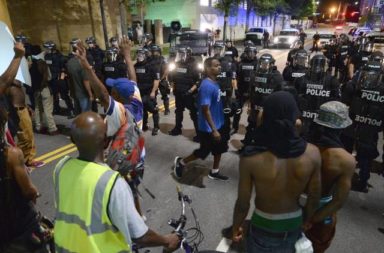It seems that today, everyone has a camera, and is filming everything. This sharing of everything has now extended into Law Enforcement with the advent of body cams. Are body cams the answer to our problems in Law Enforcement?
-
Police face increasing hostility from the public
-
Body cams show us footage of the interaction, but they aren’t perfect.
-
Non-functional cameras and huge amount of data are the main problems with body cams.
-
Not a perfect technology, but definitely a move in the right direction
There has always been violence between the police and the people in America. People always try to compare the United States to countries like Sweden or Denmark to highlight the differences in fatal interactions with police. But the truth is we cannot compare these countries to the United States. Because the US has guns. It is legal for many Americans to carry guns, and since there are around 300 million firearms in America, anyone could be carrying a gun. Police officers must operate under this assumption, because being wrong can mean their life and the lives of others. However, being wrong can also mean the life of the accused is lost in the chaos and altercation.
With the rise in fatal police shootings, the latest being Alton Sterling and now Philando Castile, we always look for body cameras to show us what happened. But lo and behold, the technology is imperfect and easily manipulated, showing that sometimes the cameras are ‘broken’ or were not actually turned on during the incident, so we must rely on low quality footage captured by bystanders that do not always show the whole picture.
Police have faced increasing hostility from the public, and body cams have really helped to reduce that hostility as it shows incontrovertible proof of what the situation seemed like from the perspective of the police officer. You have the same information they do, and you can see for yourself how the situation seemed to play out.
A video was published by the Police Department of Palestine, Texas, showing an incident where officers shot and killed a man who drew a BB gun in what seems to be a ‘suicide by cop’. In the video, you really seen how quickly things change and the officers find themselves in trouble. If body cam footage was not available, this would have been an incident that incited outrage, but the footage really kept the officers from getting and unnecessary hate from the public.
Warning, the video contains graphic images
What are the Problems with Body Cams?
The problems are simple: the cameras are just one more tool that a police officer must worry about, and to be honest, in a dangerous situation, it is not a priority. The priority is to preserve the safety of the people, and since many cameras are not automatic, they are just another step that delays the officer from responding to a potentially life-threatening and dangerous situation.
Additionally is the issue with body camera placement. The cameras are still a bit bulky, and sometimes get in the way and fall off (in the case of Alton Sterling) or are blocked, making the footage difficult to see. Since the cameras are chest mounted, they fall right between the arms, which when raised with a gun, the camera is often blocked.
The other big issue with body cams is data storage. The average police department with body cams generates around 10,000 hours of video footage per week, which is a huge amount of data, and storing that data in perpetuity, or at least until their case is closed, is becoming increasingly expensive. For example, TASER International, which hosts evidence.com (a site to upload and store body cam footage) has collected more than 2 Petabytes (One million gigabytes) of data so far, and it costs millions of dollars per year to host this data. As more and more police departments adopt body cams, this will just go up and become more complex. In fact, most of the cost of body cams is the storage cost.
Are Body Cams the Answer?
Yes, they are. They are not perfect, but it is a technology that has proved extremely beneficial for both officers and critics of police actions. The camera footage more often than not helps support the police actions in normal situations, and It also provides proof of wrongdoing when police officers act contrary to the law.
But there are limits to the technology. First, they need to make the cameras automatic. The cameras should turn on automatically every time the officer exits their vehicle. Additionally, there should be sensors attached to the officers gun that increases the recording quality the moment the officer draws their weapon. The placement of the camera should also be discussed, with cameras located on the chest, in glasses on the officer’s face, or mounted on the gun itself. All of these would help to improve the amount of evidence, but that would lead to increased data cost, which will be the next hurdle for police departments to tackle.





